[Jimbaux will not take these things for granted.]
What A Difference 10 Years Does and Does Not Make
Since today was the 10-year anniversary of an epic and stormy day on the Lockport Branch, since I was (and am) in town, and since the LDRR 1850 was again based in Schriever as it was exactly 10 years ago, I decided to devote a little time to chasing and photographing the Louisiana & Delta Railroad’s Schriever job as it did its work in the Raceland area; by doing this, we can see what is the same and what is different 10 years after that memorable day on the Lockport Branch, which begins in Raceland.
It was cold this morning! I hate to sound like a martyr, but, at first, I was out this morning more out of a sense of obligation than out of enjoyment, though I enjoyed it more as the time progressed; as I have written before, my enthusiasm for being trackside has waned this year, but many of you have commented that you welcome the return of new material, as I have recently posted new stuff.
I was at Le Jardin this morning getting some stuff done and listening to the scanner. I heard the LDRR 1850 doing some work at Schriever, and that is when I got the idea that maybe I should get out and photograph the train working, since it had the same locomotive today that it had 10 years ago today! So, after the westbound Sunset Limited passed, I heard the LDRR 1850 get a “work between” warrant to do all of its work at Raceland, Vallier, and at Monsanto; wow, there must be nothing else running today for several hours!
Melodic Morning
I departed Le Jardin with my gear sometime after 10:30 and got set up to photograph the train near the 49.6 detector. It took the train much longer than expected to show up, but show up it did.
Well, we are off to a good start here, I think. This is what this train looks like on its eastern days in the post-2007 world, since the closure of Valentine Paper: no boxcars.
The first four tank cars appear to be LPG cars and are therefore likely bound for the gas plant in Paradís, and the remaining tank cars are likely all bound for Monsanto in Boutte-Luling.
Raceland
When I got to Raceland, I noticed that there was a crude oil train parked in the siding. Here is a different view of Raceland Raw Sugars, showing some hopper cars stored for Monsanto.
There is also the matter of whatever new railroad customer may soon be using the Post Office track, a track that is apparently getting a little bit of investment.
In the mid-1960s, my father and his brother would unload boxcars of framing lumber here for their uncle who was a local building contractor. This track hasn’t been used in about three years ever since offloading of lumber for Dufrene Building Material – the customer of the empty centerbeam flatcar that you see in this post – moved from here to Schriever, apparently because the feed store in the background of this picture had problems with the off-loading being done using its property.
Hey, Look, Those Are Not Tank Cars!
So, now, the LDRR 1850 went onto the eastern leg and then set a few loaded hopper cars at MTI.
That still is really cool, but I liked it better when old boxcars were on that track instead.
My First Shots of A Crude Oil Train On The Mudbug Sub
Actually, even though I have seen one or two of these BNSF crude oil trains in New Orleans, this is the first time that I see one on the Lafayette Subdivision itself.
The L&D job left its train on the mainline, which I thought was odd, but, as stated earlier, it did get a work-between warrant, and the crude oil train appeared to be dead. Perhaps it died waiting for the #1.
After the L&D job spotted the loaded hoppers, it went around and pulled some empty hoppers and then shoved them down the west leg of the wye toward the siding, presumably for the UP local to pick up (probably not until Thursday.)
Sugar Mill Action
It had been probably six years since I shot molasses tank cars being pulled from the sugar mill, and I got it today, complete with the steam coming from the cooling ponds.
You can barely see off in the distance on the mainline the parked crude oil train. Below, you can see the trainman on the last tank car.
The Cajun Porkchop and I shot scenes very similar to this here in November 2007.
Back At The Junction
The L&D job emerges from the branch back onto the mainline and then shoves to couple to the rest of its train.
You can see from this picture another change that has happened in the last 10 years, one that I had not thought to include until I saw Ray Duplechain’s comment in the comments section (so, this paragraph is not original to this post.) In the last 10 years, or much fewer than that, the pond that took up most of the picture has been filled in by the sugar mill. That black stuff you see is a very fine powder that is a residue from the sugar-making process, some carbon from the plant itself. I am not sure that the pond is being filled in for any other reason than as a place to put the residue. The pond had long since outlived its purpose, which was a water source for steam locomotives! Duplechain, who frequently reads and comments on postings here, started to work for the Southern Pacific in the mid-1950s and rose to managerial ranks. I therefore highly value his insight, information, and commentary shared.
Oddly to me, the crude oil train had only one locomotive on the front but two on the rear, and one of the rear units was a Norfolk Southern unit; also, the cover car seen in this picture was a Southern Railway hopper.
Above, you can see the trainman riding the point, about to couple the cars.
So, the presence of crude oil trains is something that has surely changed in the last 10 years! Furthermore, with a new crude oil terminal being built in Raceland right now, the local railroad scene will change even more, deviating even further from the mostly-boxcar scenes of 10 years ago today. Note that an empty centerbeam flat car is the only actual freight car in this scene that is not a tank car.
After this, the train departed to the east, but I had neither the time nor the inclination to chase it; to do so would have been to deviate from today’s agenda too much, which was to show the Schriever job at least working in the same setting as it did 10 years to the day before. So, while we are standing on top of the truck (for the third time today), let’s take a quick look to the mill to the west.
That is a little bit different.
Back At The Mill
Let’s take one look at the mill.
That is interesting. Let’s go home now.
That is really it, everyone. In 10 years, some things have stayed the same, some things have changed, and I have done both. What about you?
Jimbaux
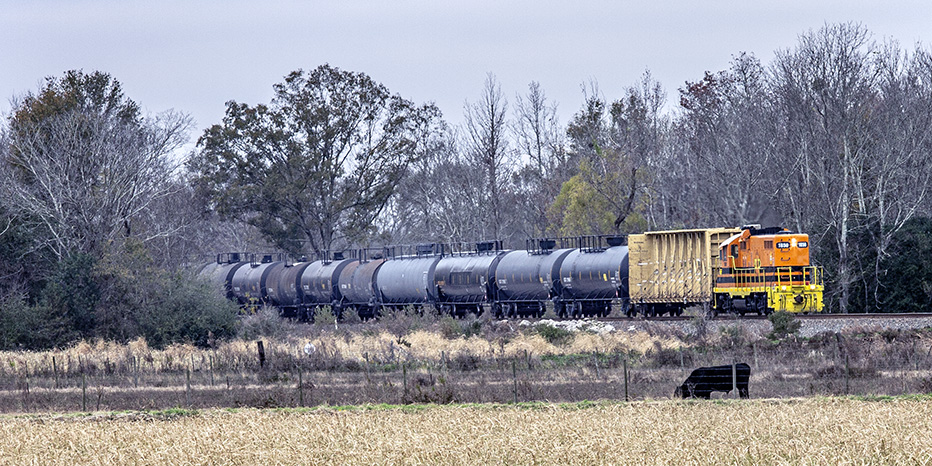
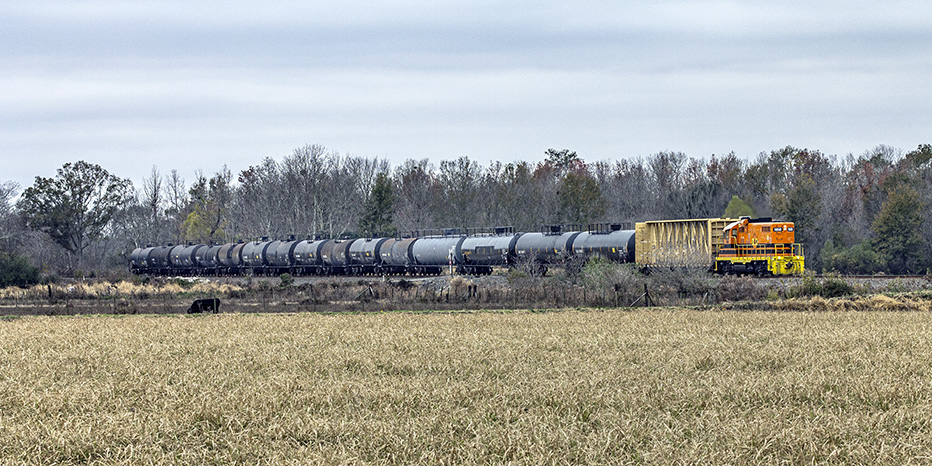
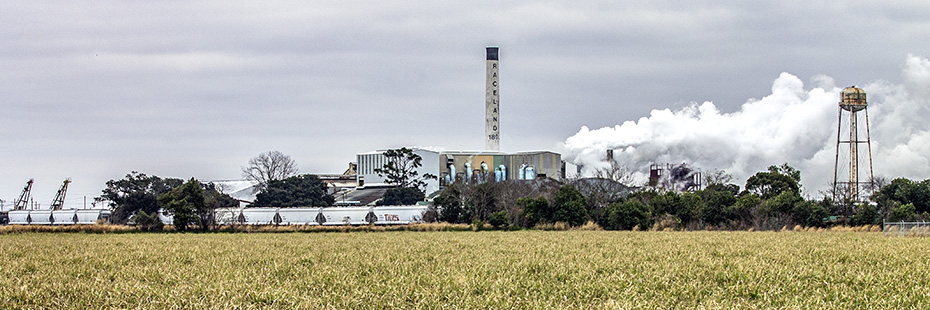
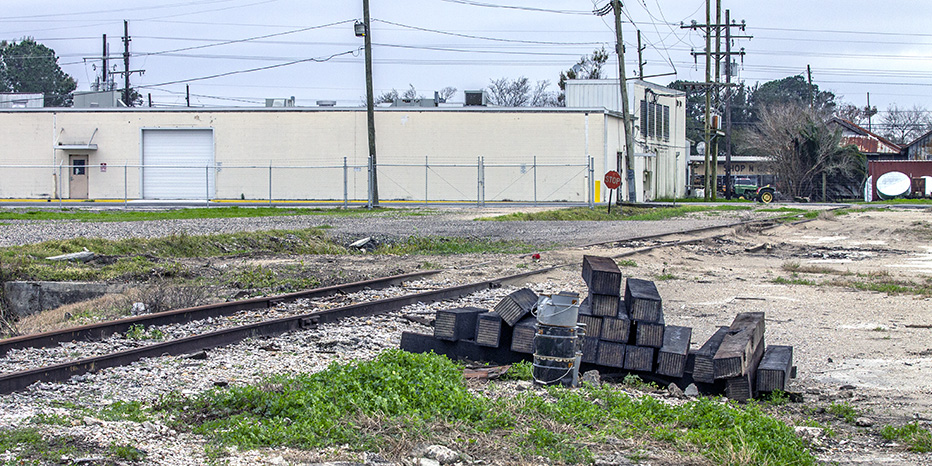

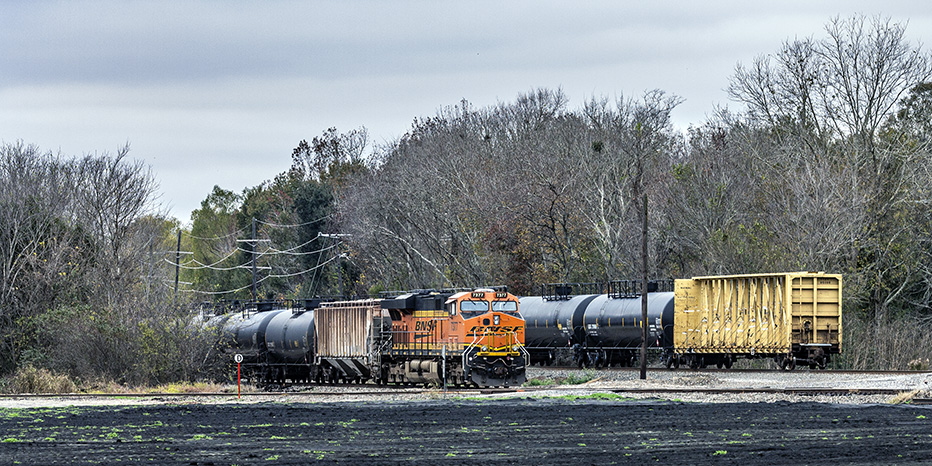
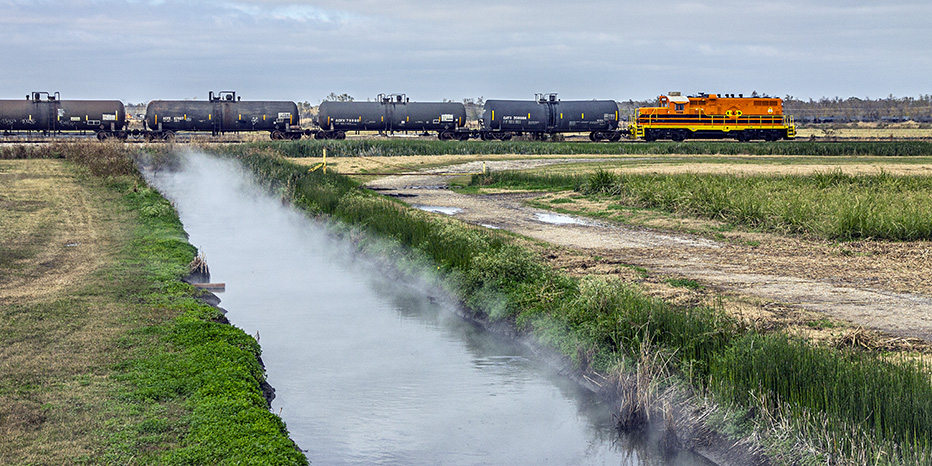
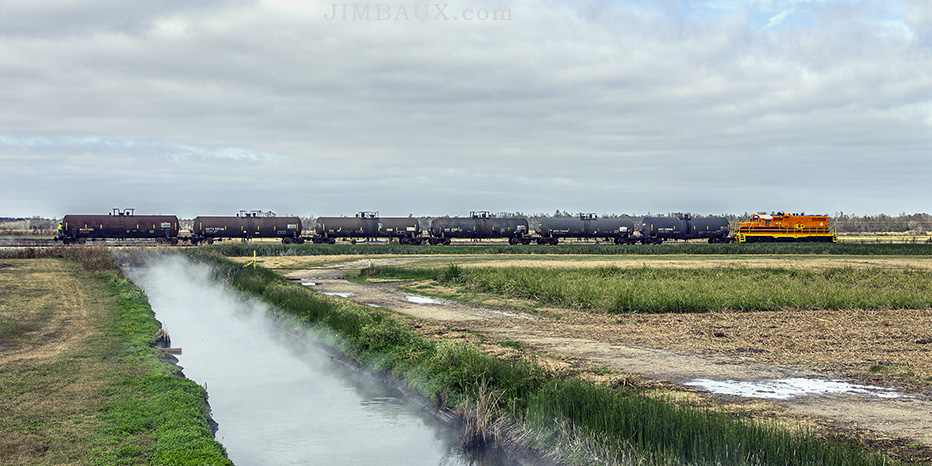
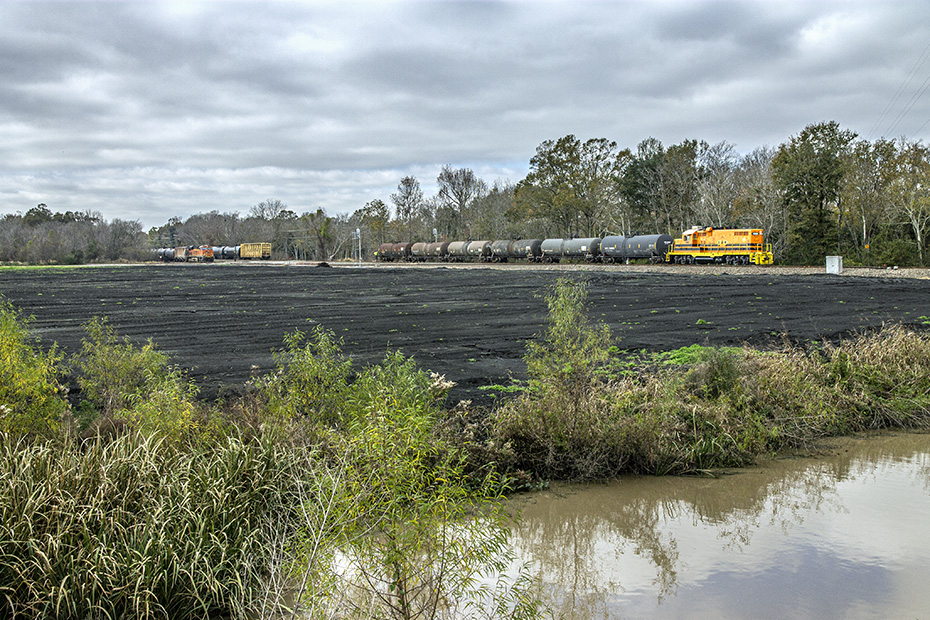
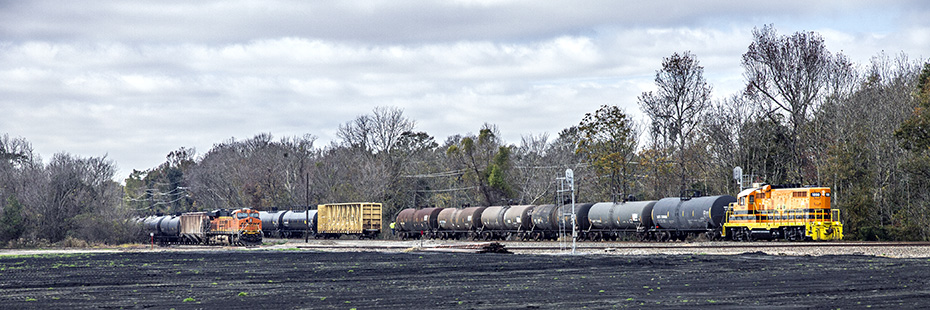
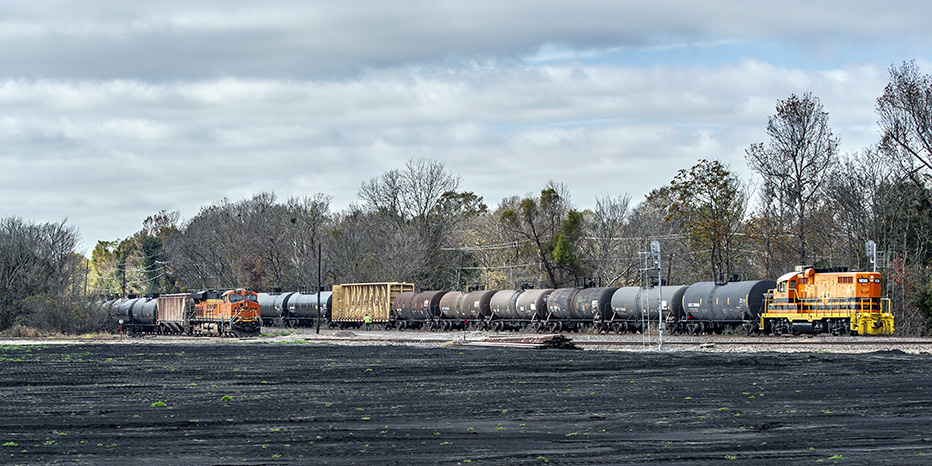
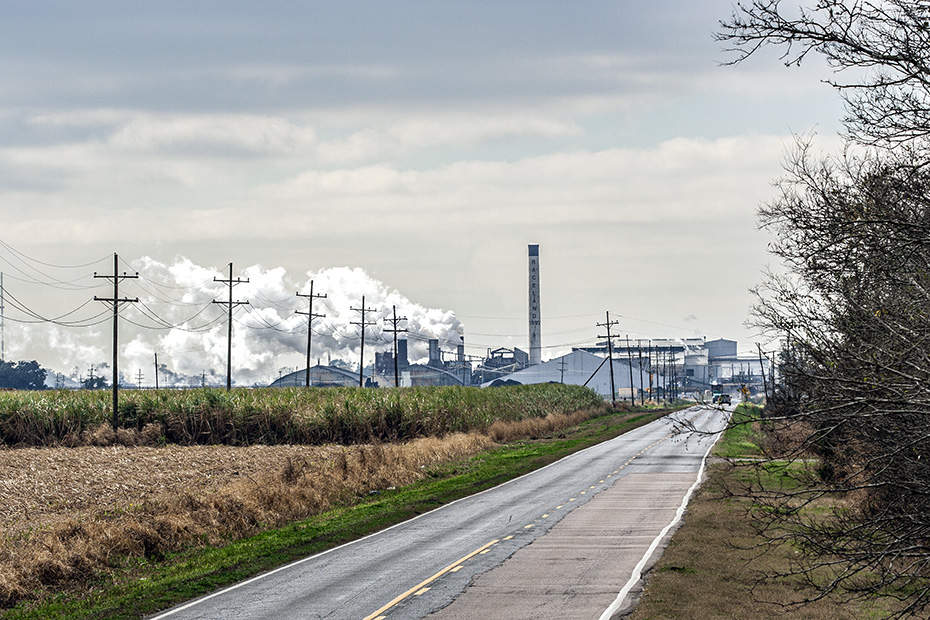
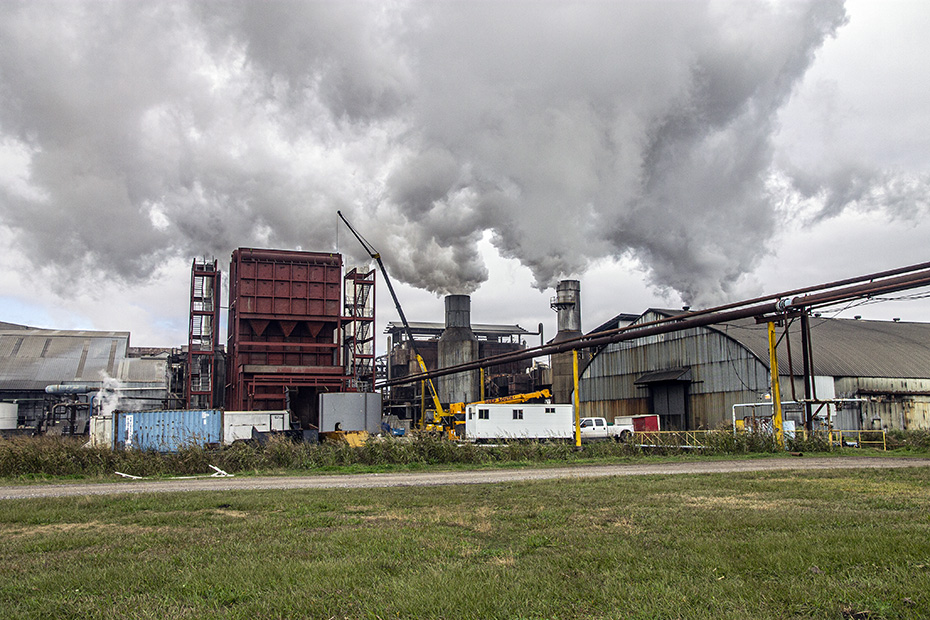

{ 5 comments… read them below or add one }
Talking about change…I could sit and write about change for a couple of hours after viewing this presentation. Of course my experience goes back a few decades and it causes nostalgia and lonely sensations; but, that is good to reflect on the changes that time generates and provokes. Good presentation! I share some of my memories reflecting on the changes that have occurred in the past 50 years at the location which is the subject of this presentation; east end of Raceland Jct.; ML&T Main Track and Siding with connection to Lockport Branch.
The other support tracks that existed then were the long storage track between the main and siding, wye, short storage and field track. Also, the depot which included the telegraph offfice, waiting rooms, rest rooms (white and colored) and storage/supply room which included Railway Express area.
The depot was between the main track and the siding. On the north side of the main track there company houses for the
Agent, Signal Maintainer, Section Foreman and section hands. The motor car shed was multi purpose for the motor cars of the section gang, signal maintainer was near the coulee bridge on the east end. Water supply for the engines was on north side of track just east of depot and water could be taken on both the main and siding; the foundation for these were still in place when I retired. Racleand Jct was still a quaint little settlement in 1955; but, disappeared within 10 years or so.
The last photos here show the recently filled pond that exist which was the source of water for the steam locomotives which was pumped into the tank that existed north of the main track. The water for the locomotives could be taken from the main track or the siding.
Wow, thanks for the comment, Dupe! I had not realized that the settlement at Raceland Junction was so extensive, but it makes sense for a day when railroading was more labor intensive and passenger focused and when people lived much closer to their jobs.
I had neglected to include that “change” in the last decade included the pond being filled in!
Also, I went back and added some information under the picture of the Post Office Track (and in other parts of the article.) Please scroll up and see that. What can you tell us about the customers and activities on that track? I know about the agricultural supply store, as it is still there and is apparently the reason that lumber is no longer off-loaded there, and I do remember the track across La. Hwy. 308, the last remnants of which were removed in 1998 or 1999, but what else was there?
Beautifully composed pictures. All of them are works of art.
What are the cooling ponds use for at the sugar mill? I’m very unfamiliar with how an operation like that works.
Cool set of pictures!
Nathan Kaufman
I always see those crude oil trains sitting in the raceland siding. I’ve even saw that oil train you caught in the photo. A month ago i seen one meet a eb freight that had a sd75i trailing in second, while i was getting unloaded at the mill. A few days, the Louisiana Delta had molasses car derail inside the mill !